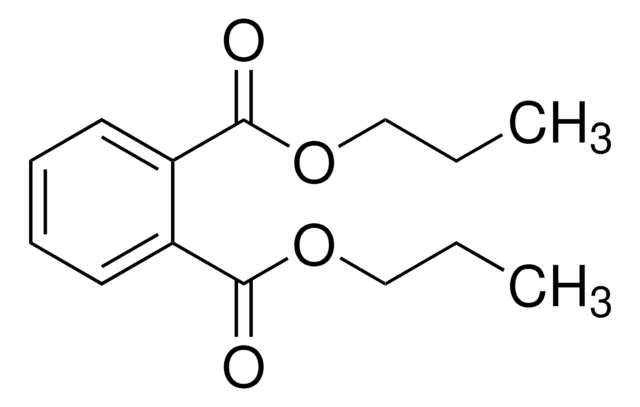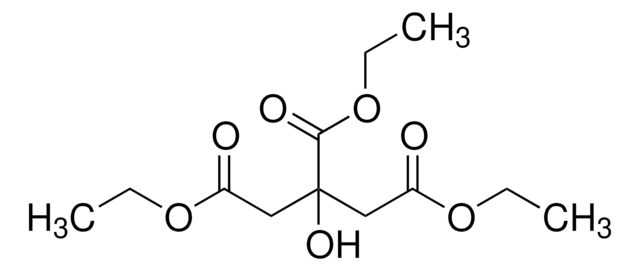36925
Diallyl phthalate
analytical standard
About This Item
Polecane produkty
klasa czystości
analytical standard
Poziom jakości
gęstość pary
8.3 (vs air)
ciśnienie pary
2.3 mmHg ( 150 °C)
temp. samozapłonu
725 °F
okres trwałości
limited shelf life, expiry date on the label
metody
HPLC: suitable
gas chromatography (GC): suitable
współczynnik refrakcji
n20/D 1.519 (lit.)
tw
165-167 °C/5 mmHg (lit.)
gęstość
1.121 g/mL at 25 °C (lit.)
Zastosowanie
cleaning products
cosmetics
environmental
food and beverages
personal care
format
neat
ciąg SMILES
C=CCOC(=O)c1ccccc1C(=O)OCC=C
InChI
1S/C14H14O4/c1-3-9-17-13(15)11-7-5-6-8-12(11)14(16)18-10-4-2/h3-8H,1-2,9-10H2
Klucz InChI
QUDWYFHPNIMBFC-UHFFFAOYSA-N
Szukasz podobnych produktów? Odwiedź Przewodnik dotyczący porównywania produktów
Opis ogólny
Zastosowanie
Polecane produkty
Hasło ostrzegawcze
Warning
Zwroty wskazujące rodzaj zagrożenia
Zwroty wskazujące środki ostrożności
Klasyfikacja zagrożeń
Acute Tox. 4 Inhalation - Acute Tox. 4 Oral - Aquatic Acute 1 - Aquatic Chronic 1 - Skin Sens. 1B
Kod klasy składowania
10 - Combustible liquids
Klasa zagrożenia wodnego (WGK)
WGK 3
Temperatura zapłonu (°F)
330.8 °F - closed cup
Temperatura zapłonu (°C)
166 °C - closed cup
Środki ochrony indywidualnej
Eyeshields, Faceshields, Gloves, type ABEK (EN14387) respirator filter
Wybierz jedną z najnowszych wersji:
Masz już ten produkt?
Dokumenty związane z niedawno zakupionymi produktami zostały zamieszczone w Bibliotece dokumentów.
Nasz zespół naukowców ma doświadczenie we wszystkich obszarach badań, w tym w naukach przyrodniczych, materiałoznawstwie, syntezie chemicznej, chromatografii, analityce i wielu innych dziedzinach.
Skontaktuj się z zespołem ds. pomocy technicznej








